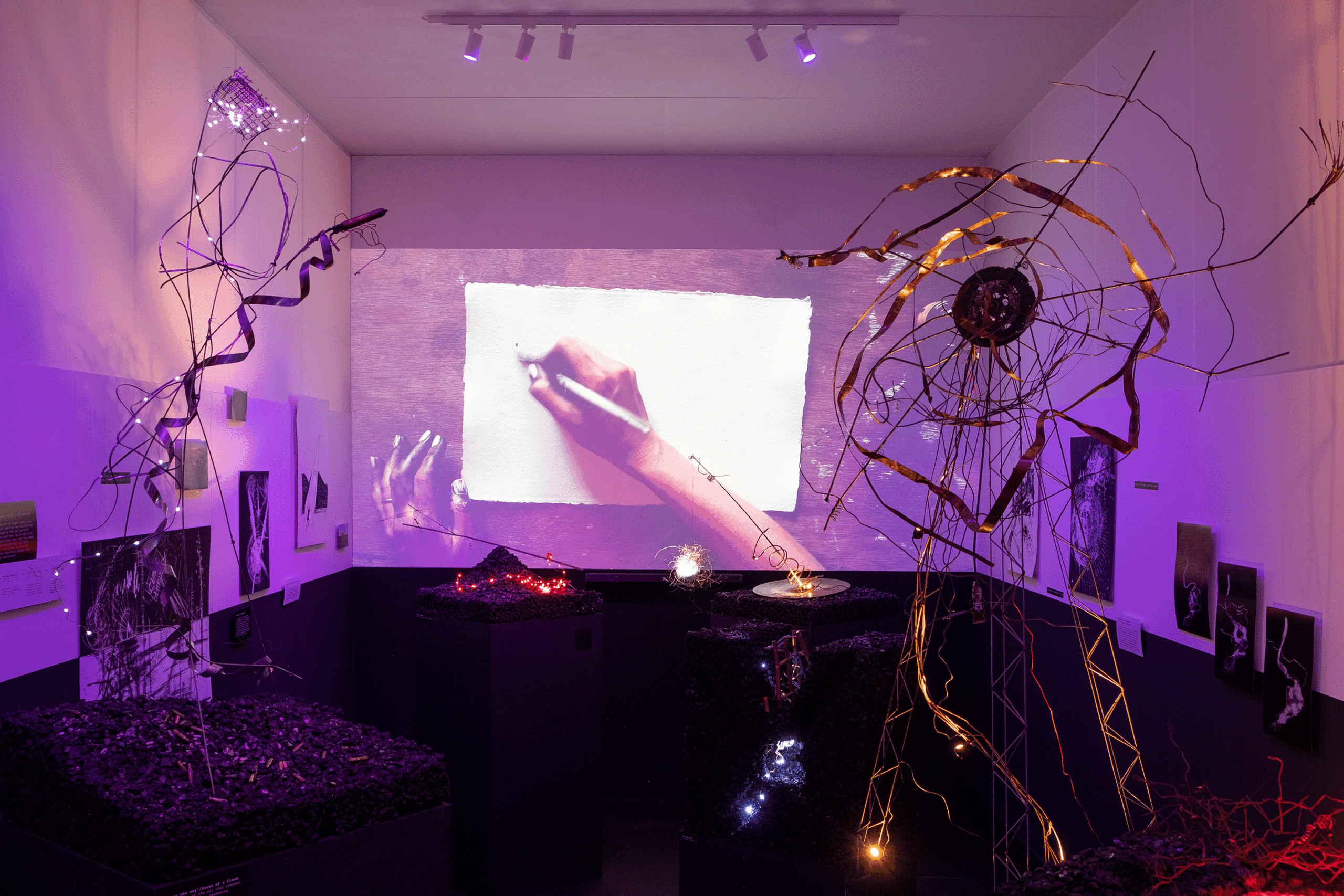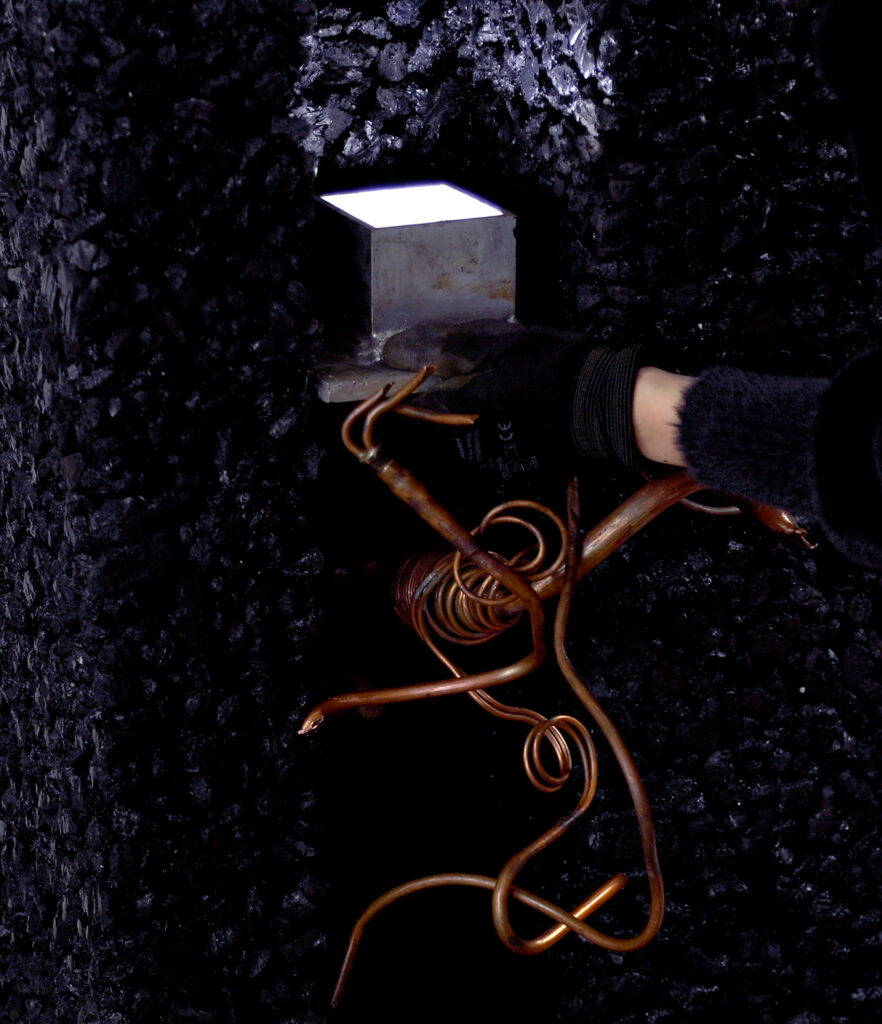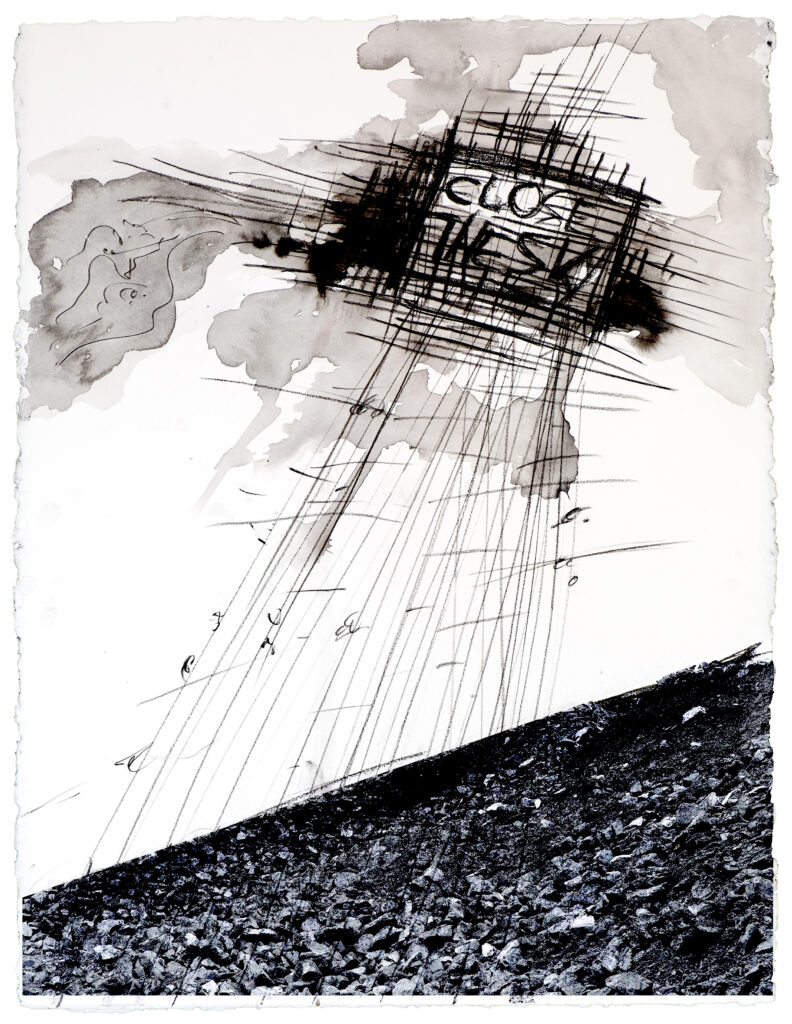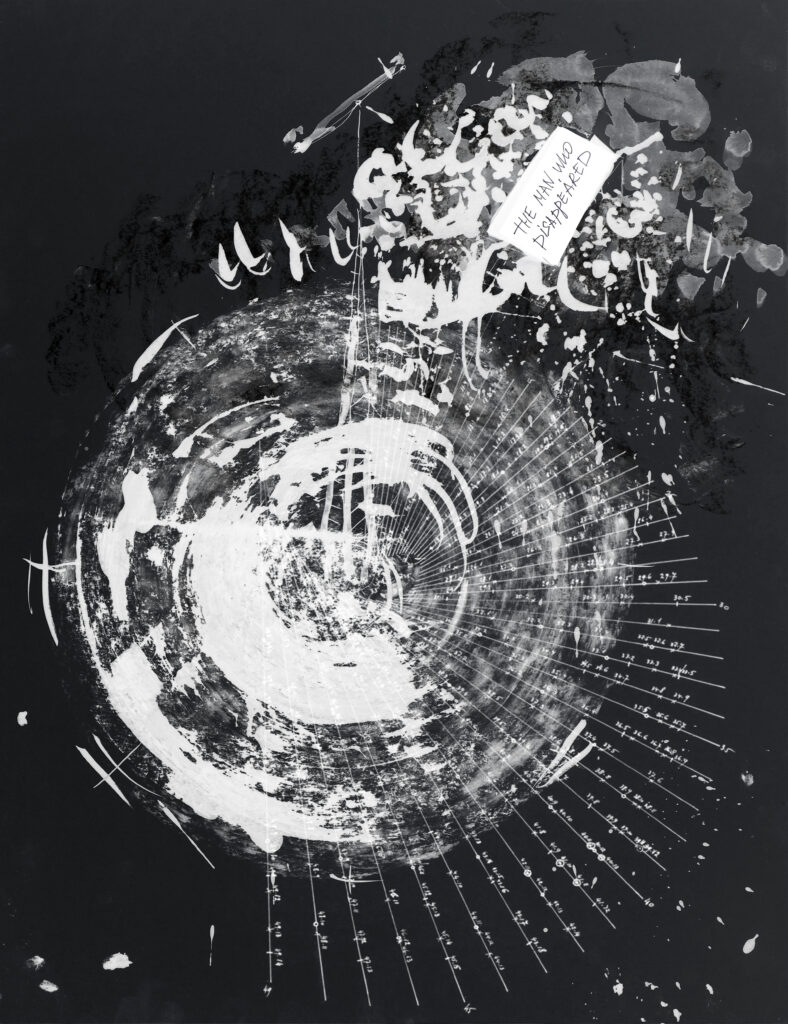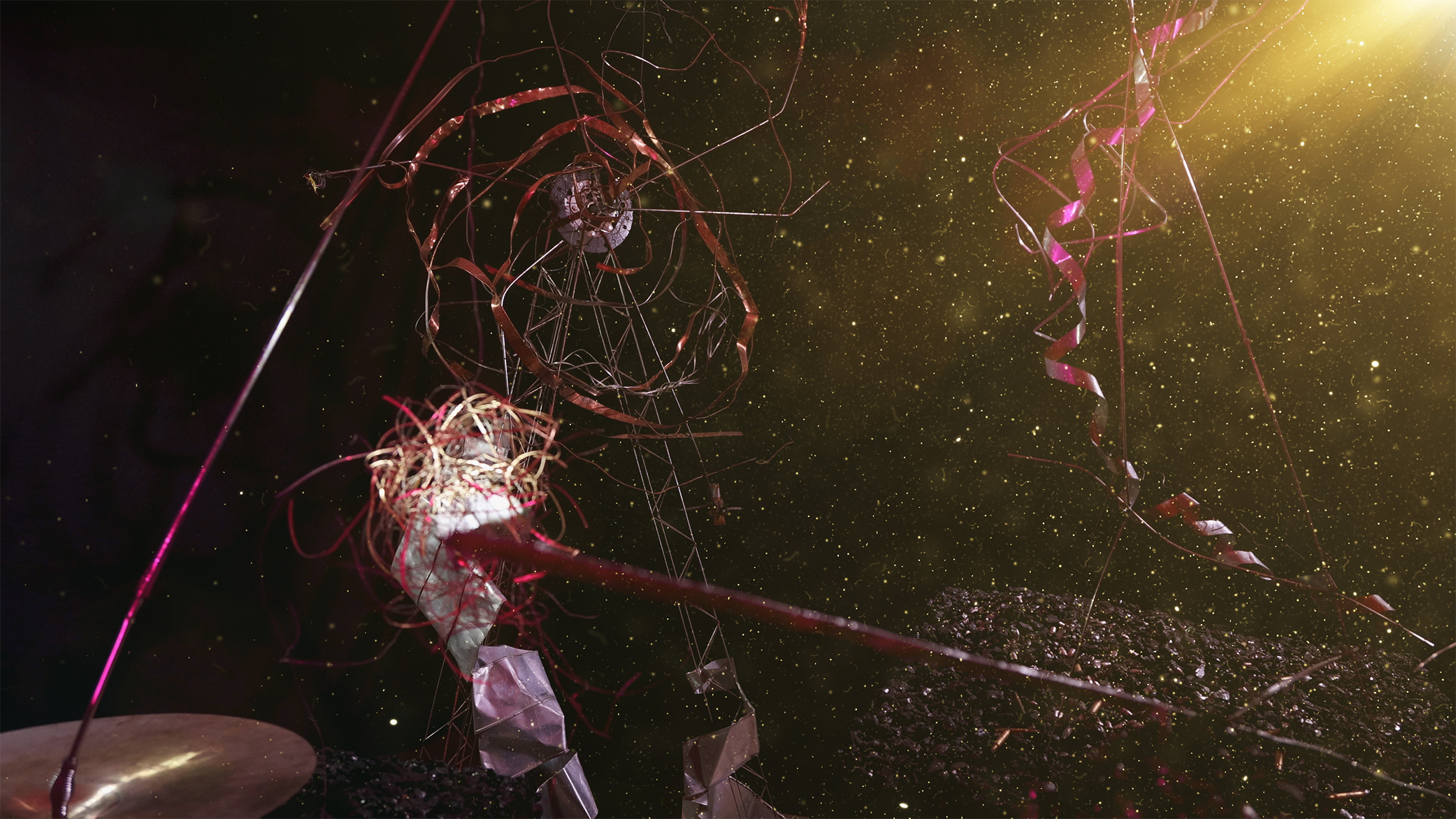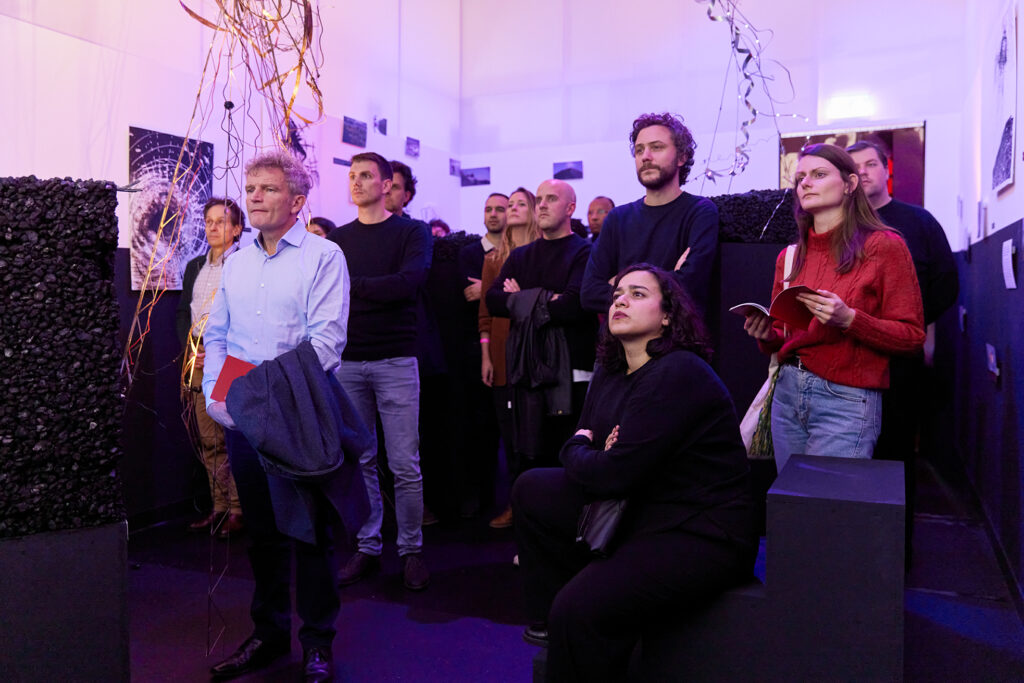Prix de Rome laureate: click here to read more
Type: multimedia installation, design and research
Media: sculptural objects, drawings, film, sound, light, smell
Year: 2022
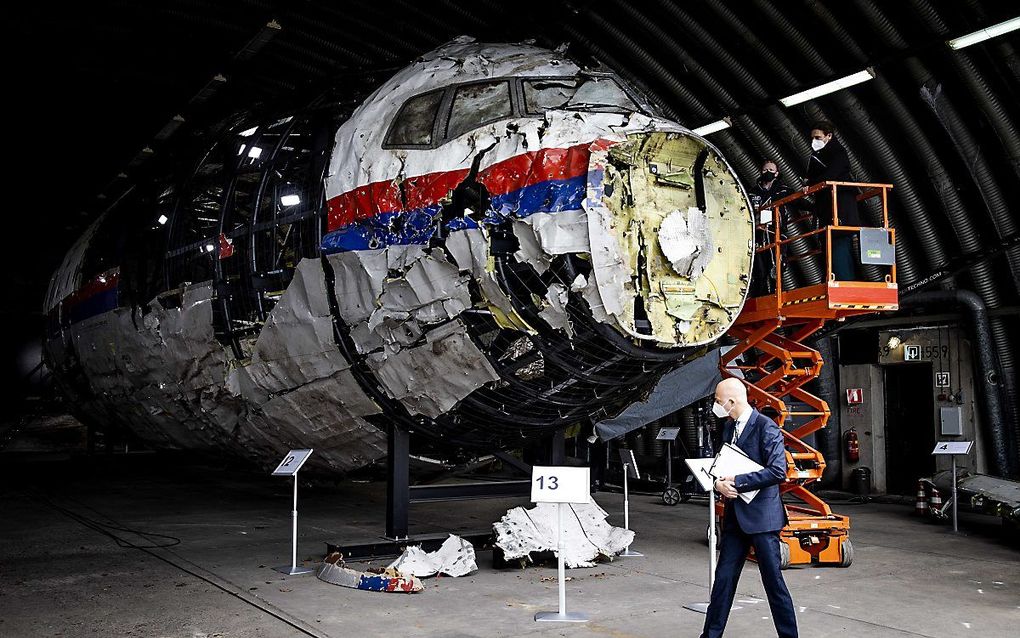
What precedes:
On 17 July 2014, fifteen minutes after a Malaysia Airlines Boeing 777 took off from the Polder Runway at Schiphol Airport, a trailer with a BUK surface-to-air missile rode into the Ukrainian town of Snizhne, thousands of miles away. At that specific moment the two events were still unrelated, and would have gone unnoticed but for the fatal collision of the two within hours.
A point determined only by a radar seen from the ground, the aircraft fell from the sky like a foreign body and crashed into the forgotten mining village of Hrabove. Located in Donetsk on the border with Luhansk, two self-proclaimed independent regions in eastern Ukraine, it is a very isolated area struggling with several issues like human rights violations, geopolitical disputes, economic mismanagement and nature degradation.
Aircraft debris lay scattered across an area of 50 km2. The passenger plane became an instrument, a magnifying lens or radar, pointing our view towards non-human evidence, exposing traces of the many layers of this site, and binding together seemingly unrelated events.
The interconnected system of coalmines on both sides of the Russian-Ukrainian border seems to ridicule the very notion of ‘territory’, ‘customs’ and ‘control’. Yet that is what MH17 testified. It also drew attention to other disputes: the conflict arising from polluted water and methane released from mines, creating an ecological catastrophe beyond borders and extending to the rest of the world.
The area where the plane crashed is a counter form, a physical mould of our political and societal fractures, where intangible political negotiations within and outside the territorial borders materialize, turning the Donetsk region into a geology of political conflict. It is a place where geopolitics manifests itself vertically: up into the sky and down into the ground. The usual stratification of sky, surface and underground was unsettled by the crashed plane and mining.
Fossil fuels inscribe their infrastructural order as a mode of planetary organization and world political order. Resources are used as political tools or weapons. Owing to the war in Ukraine, the West, largely dependent on oil and gas, came under increased pressure to develop sources of renewable energy more rapidly.
The transition to green energy means not only a new industrial revolution, a new world order, but also new mines and new conflicts, largely connected to resources. Many current conflicts are impossible to resolve from a human perspective. What is good or what is bad for someone is always subjective.
Much of what actually constitutes politics is not addressed through our political institutions today. Could we invert our political systems so that they are shaped by the real world of actions and reactions, by all political actors beyond human ones, and thus adopt a more objective perspective? Could we create a true arena of political agencies that negotiates between sky, surface and underground?
In current conflicts, architecture can no longer assume control by relying on its normal tools and thinking. For that, a new language must be developed. This project embraces the chaos not as a distortion but as the only means to achieve insight. It proposes a series of new axioms to bypass the blockade of unresolvable disputes. Design here assumes the role of a mediator that produces a new lens in order to deconstruct existing dogmas and give shape to the crucial interaction of visible and invisible processes.
Bringing together global and local concerns, this project asks:
What does control mean?
What are borders?
How is truth also a fictive story?
What is an institution?
Where do politics start and
where do politics start to fail?
Where does your responsibility stop?
